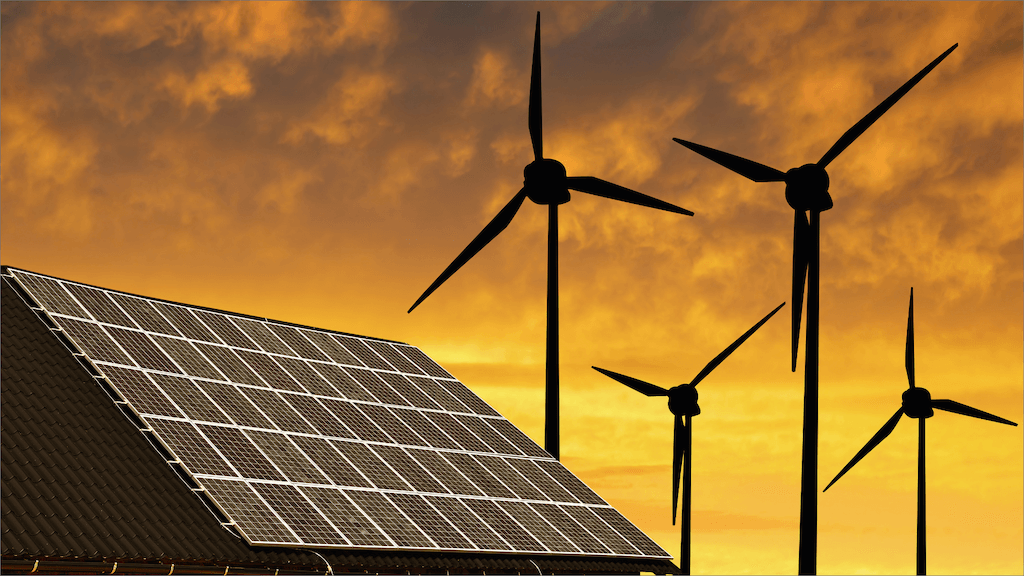The share of renewable energy in power generation is growing. According to BP, renewable energy will be the main source of energy consumption within two decades, like solar energy and other renewables will account for about 30% of the world’s electricity supplies by 2040.
But what is it that makes this energy source so popular and in demand, and how exactly can artificial intelligence come in handy? Before we get to that, let’s take a quick look at the definition of renewable energy.
What is renewable energy?
Renewable energy is a type of energy that is generated from sources that are naturally replenished and never run out. The most popular sources of renewable energy are:
- Solar energy – Energy generated by light and heat from the sun.
- Wind energy – Harnessed energy from the wind by windmills or wind turbines.
- Hydro energy – Energy acquired from the movement of fast running water, like a waterfall.
- Geothermal energy – Geothermal energy is the heat derived from the earth’s subsoil carried to the earth’s surface by water or steam.
- Biomass energy – Energy generated from living organisms such as plants or animals.
So, what makes the above energy types so in demand, and why are they the fastest-growing energy sources? Because renewable energy sources are available mostly for free and are environmentally friendly. These points are especially important in today’s world that raises concerns about climate change.
However, there are two sides to every coin and renewable energy is no exception. There are certain downsides when it comes to renewable energy, but fear not, as this is exactly where artificial intelligence comes in for help.
AI – removing the limitations of renewables

While the concept of renewable energy is great, there are several issues with it. The problem is that although renewable energy sources (wind, solar, etc.) are freely available, they are not obtainable 24 hours a day, 7 days a week. The sun’s rays are available at certain times of the day or there may be no windy days. Unforeseen climates or periods of the season pose the problem of intermittency.
Let’s take a look at the ways that artificial intelligence can be helpful in addressing the problem of intermittence.
Centralized control centers that communicate
With the rise of smart devices and data collection, the energy grid, like most of the technology around us, is becoming more and more interconnected. This paves the way for artificial intelligence to use its algorithms with data from the wireless sensor network to better control operations, such as matching supply with demand, as they should ideally be balanced.
So, by looking at historical data for power demand, day of the week (weekdays or weekends, festivals or holidays) and feeding it to artificial intelligence algorithms, you can predict the possible demand for electricity.
Renewable energy:

For the supply side, weather data plays a very significant role. The collection and analysis of meteorological data such as temperature, humidity, wind speed and direction, cloud cover, solar irradiance, and other weather conditions are vital for AI models to understand and know in advance whether the required amount of energy can be generated.
Artificial intelligence as the future of renewables
The combination of artificial intelligence with the data mentioned above can serve as a robust tool to mitigate the challenges related to renewables. AI technologies can increase efficiency, lower the costs of operation and maintenance, improve grid security, enhance environmental protection, control energy storage
It is also important to note that with the transformation of homes and cities with smart devices and data aggregation, Artificial Intelligence is likely to become more powerful and influential when it comes to renewable energy.
For smart homes and buildings, the question about how much energy they consume is paramount. This data will be used to manage and optimize energy consumption (by predicting peak demand). With this ever-increasing interconnectedness of devices and sources of renewable energy, AI becomes a powerful tool that can help utilities meet increased demands for electricity.
Want to see a real-life example of how a major power supply provider in Germany managed to predict power consumption a day in advance and how it could forecast power generation potential? Be sure to check out our case study then!








